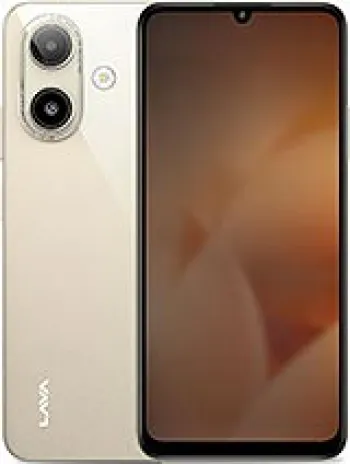
Overview of Lava Iris 404e
Lava Iris 404e, launched in December 2013, positions itself as a budget-friendly smartphone catering to basic mobile needs while providing a touch of smart features. Despite being discontinued, it captured attention due to its affordability coupled with decent utility for the average smartphone user back then.
Network and Connectivity
The Iris 404e supported dual SIM functionality, catering to users who needed to manage different mobile networks or make use of separate lines for personal and professional use. Operating on GSM technology, it offered basic connectivity including GPRS and EDGE for data. While it lacks 3G or 4G capabilities—a common limitation in budget phones from that era—it adequately catered to basic communication needs.
Design and Build
Sporting a sleek and lightweight design, the Lava Iris 404e came with dimensions of 125 x 64 x 9.9 mm and a weight of just 113 grams. This made the phone comfortable to hold and easy to carry. The plastic build reflects its budget nature but provides a crisp exterior with choices between black and white colors to suit different aesthetic preferences. The dual SIM functionality added practicality for users looking to manage more than one number.
Display
The smartphone featured a 4-inch TFT display with a resolution of 480 x 800 pixels, bringing forward a pixel density of approximately 233 ppi. For its price range, this provides a decent viewing experience with acceptable clarity for texting, calling, and basic multimedia use.
Platform and Performance
Running on Android 4.2 Jelly Bean, Lava Iris 404e's platform was suitable for running basic apps and services. The device was powered by a dual-core 1.2 GHz processor, paired with a Mali-400 GPU, which together offered moderate performance. Although it lagged in handling heavy multitasking or gaming, these specs were adequate for everyday tasks such as browsing the web, social media interaction, and light app usage.
Memory and Storage
The smartphone came equipped with 256MB of RAM, which is undeniably minimal by today’s standards but was common for entry-level smartphones during its release. The internal storage was limited to 2GB, but it cleverly featured a microSDHC slot, allowing for storage expansion and accommodating user demands for more space for music, photos, and essential apps.
Camera
The Lava Iris 404e featured a 2 MP main camera, which supported basic photography needs, providing functions such as panorama shots. While it won't capture high-quality images akin to more advanced smartphones available today, it was ample for casual snapshots. The device also included a VGA front camera, meeting the bare minimum requirements for video calls, albeit at a low resolution.
Battery Life
With a removable Li-Ion 1400 mAh battery, the Iris 404e promised up to 150 hours on standby and around 7 hours of talk time. While the capacity seems limited, it was adequate given the power consumption of the hardware components involved.
Additional Features
In terms of additional features, the device was quite basic. It came with WiFi support, Bluetooth 3.0 with A2DP for wireless audio streaming, and FM radio for on-the-go entertainment. The lack of advanced positioning technology (like GPS), NFC, or 4G support is notable but expected within this price segment.
Conclusion
The Lava Iris 404e, despite its limitations by today’s standards, presents a snapshot of budget smartphone offerings in the early 2010s. With its simple design, elementary smartphone features, and cost-effectiveness—priced around 50 EUR—it's ideally suited for users with minimalistic mobile phone expectations. Its discontinuation marks the evolution of smartphone standards, emphasizing the rapid pace of technological advancement.
Key Features of Lava Iris 404e
- Dual SIM support for managing two SIM cards simultaneously.
- Compact and lightweight design with dimensions 125 x 64 x 9.9 mm and a weight of 113 g.
- 4.0-inch TFT display offering a resolution of 480 x 800 pixels.
- Powered by Android 4.2 (Jelly Bean) operating system.
- Dual-core 1.2 GHz CPU for basic multitasking and operations.
- Mali-400 GPU providing moderate graphical performance.
- Expandable storage via microSDHC card slot.
- Includes basic 2 MP main camera with panorama feature.
- Connectivity options include Wi-Fi 802.11 b/g/n, Bluetooth 3.0, and FM radio.
- Equipped with essential sensors like Accelerometer.
- Removable Li-Ion 1400 mAh battery.
- Affordable price, approximately 50 EUR.
Disadvantages of Lava Iris 404e
- Old Operating System: Runs on Android 4.2 (Jelly Bean), which is outdated compared to modern standards.
- Limited Memory: Offers only 2GB of internal storage with 256MB RAM, which is insufficient for today's app demands.
- Basic Camera: The main camera is only 2 MP, and the selfie camera is VGA, resulting in low-quality images.
- Poor Display Quality: Uses TFT technology with 256K colors and a low resolution of 480 x 800 pixels.
- No 3G/4G Support: Lacks modern connectivity options beyond GSM, affecting internet speed and network compatibility.
- No GPS Positioning: The device does not support GPS, which limits navigation capabilities.
- Small Battery: Equipped with a 1400 mAh battery, providing limited usage duration.
- Lack of Advanced Sensors: Only includes a basic accelerometer, missing other useful sensors like a gyroscope or proximity sensor.

View Also
More Phones
All Rights Reserved +14266 Phones © Mobilawy 2025

























